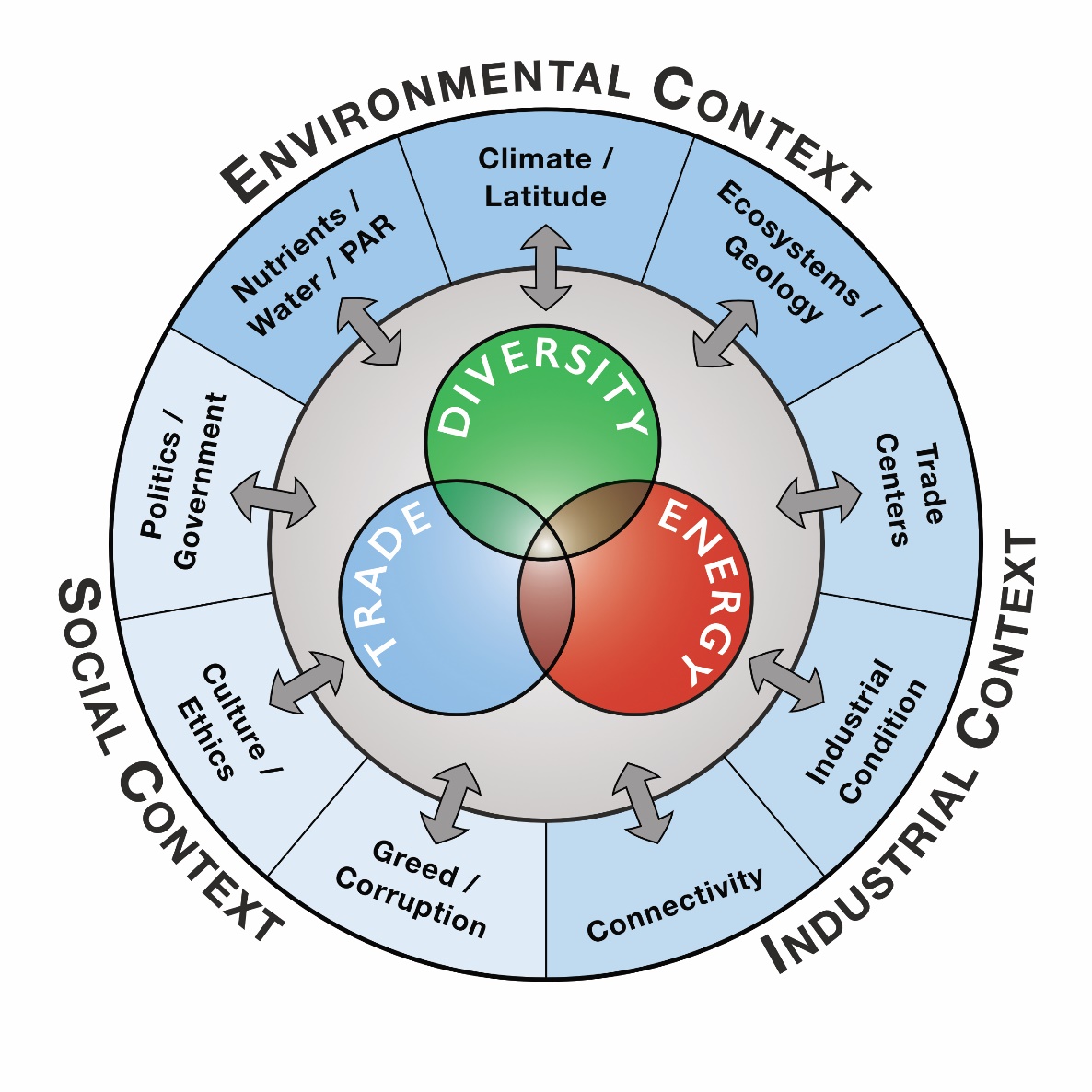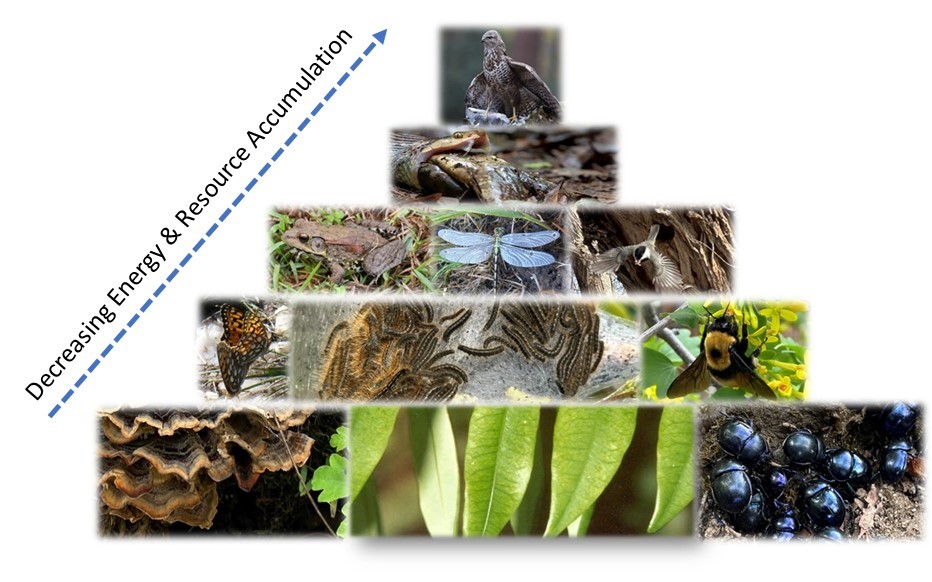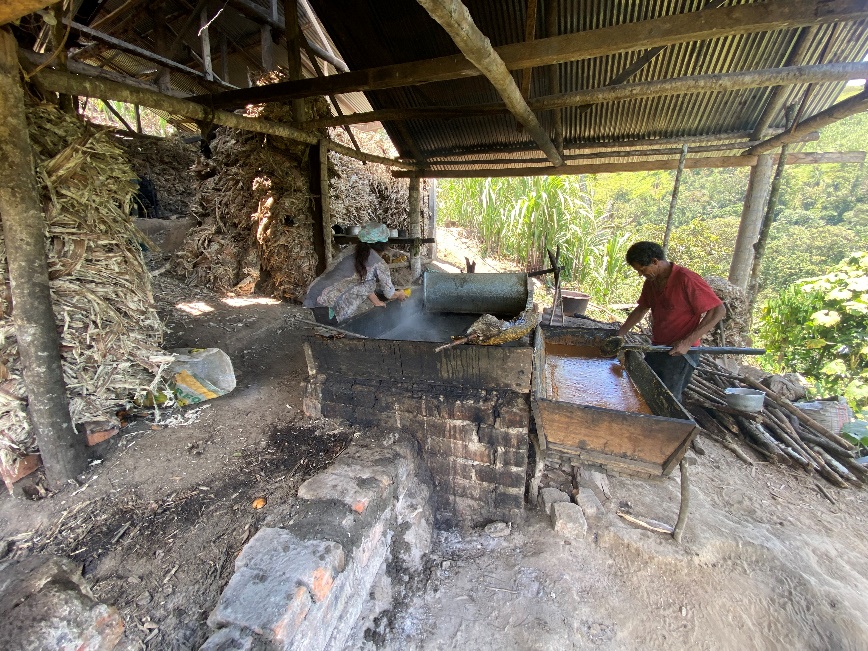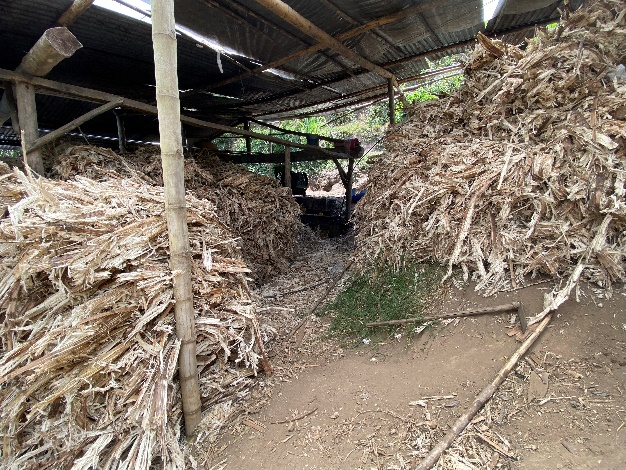I am going to poke some fun at the country I call home, where I toiled in the recycling industry in the 1990s: the United States of America. Today, despite decades of intense efforts by governments, businesses, and NGOs—alongside millions of conservationists crossing their fingers for change—America’s recycling rate is in the dumps. At best it reaches 32%. There’s a simple reason why Americans don’t recycle. We don’t need to.
Eighty years of economic tinkering—the Bretton Wood’s Agreement of 1946, the Washington Consensus of the 1980s, US-led global trade pacts—have created a system that is upside down compared to the structure of self-regulating (sustainable) ecosystems. The result is a continual stream of cheap imports, “subsidized” by low-cost fossil fuels, exploitative and unstable global labor markets, and nations with few to no environmental regulations. Recycling in America is economically unwise. Until recently, it was cheaper to export our waste to China than it was to rely on a domestic recycling industry.
“China slammed the door on America’s waste in 2018, then COVID-19 struck, and we are beginning to wake up.”
My work over the past 30 years has included exploring root causes of our social and environmental failures, by examining the common structure—the foundational components—of ecosystems and economies. The 2nd edition of my book, Ecosystems as Models for Restoring our Economies (To a Sustainable State), summarizes that work. I will share a few small pieces of the complex economic restoration puzzle here, and would be honored to see you at the March meeting to discuss more.
The Foundational Components of a Sustainable (Self-regulating) Economy
A cross-cutting analysis of ecological and economic systems indicate there are three foundational components — diversity, energy, and trade — essential to maintaining sustainable ecosystems and economies (Figure 1). These foundational components (governing components in systems thinking) form predictable interactions with one another, and should have a more significant influence on system functions and processes than other components. As in a human body, the foundational components of an economy are constantly interacting with its context: the social, industrial, and environmental forces unique to every regional economy on earth.
Like so many social and conservation efforts, traditional recycling programs and policies focus on an economy’s context, such as technology, utility rates, labelling laws, and educational programs — without addressing the economy’s foundational components. Based on the lack of progress, this begs an important question.
“Can we resolve our most important social & environmental problems without first resolving the economic flaws responsible for their creation?”

Figure 1. The foundational components of a self-regulating economy, interacting with its social, environmental, and industrial context.
A Balanced Trade Pyramid Requires a Thriving Recycling Industry
In ecosystems, nearly all biomass (the wealth of the system, the biochemical energy) is consumed in the same area where it is produced. It is endogenous, generated from within. The farther one gets from a patch of forest or meadow, the less likely they are to find evidence of that production elsewhere. This seems implausible, considering the migration of insects and birds, some of which travel more than 10,000 miles in a single year. Implausible, until we grasp that plants comprise 82% of nearly all biomass on earth. Bacteria, fungi, and other microorganisms embody another 17%, which play a critical role in system efficiency and productivity. In total, about 99% of all biomass is tied up in lifeforms that do not regularly migrate across ecological boundaries. As energy and biomass is transferred to consumers up the pyramid, energy is lost as waste heat, such that only a fraction of the primary production is evident in top consumers (Figure 2).

Figure 2. Biotic pyramid of terrestrial ecosystem.
Self-regulating economies are beholden to similar forces and processes. Only, our management of energy and trade over the past century has caused an upside-down trade pyramid, coinciding with a great economic extinction event. The US has lost five million farms and 700,000 manufacturing businesses since 1900. Today, about 80% of America’s GDP is services, government, retail, tech, and so on, while manufacturing and extractive resources comprise less than 12%. The result is a trade balloon (far from a pyramid), kept afloat by global trade and fossil fuels – exogenous resources, not generated from within.
The recycling industry has also fallen victim to America’s trade and energy rules. Relative to the quantity of waste America produces, the recycling industry lacks the diversity necessary to convert waste into new products.
Species are the basic unit of diversity in an ecosystem, and businesses are the basic unit of diversity in an economy. Restoring our economies as self-regulating (sustainable) systems requires a greater diversity of businesses in the decomposition (recycling) sector. It also requires a vast increase in renewable energy production, and a greater value of sustainable manufacturing and extractive industries—relative to industries nearer the top (Figure 3). Considering the critical function of the recycling industry in a balanced trade pyramid, including its role in energy efficiency, I have grouped all recycling businesses into the “Waste-to-Resources” sector.
Figure 3. The balanced (sustainable) trade pyramid, mirroring earth’s biotic trade pyramid.
The Natural Geography of a Circular Economy
A circular economy (CE) is regenerative, reliant on renewable energy, and unwasteful by design, with the aim of resolving climate change, biodiversity loss, and other global challenges. Several barriers to CE exist, including internal organizational obstacles, low adoption by consumers, and supply chain challenges.4,
From the evidence provided by ecology and economics, I believe the deeper challenge to CE (root cause) is the same one that challenged conservation paradigms in the 1960s, going as far back as Humboldt’s call for environmental protections and social justice in the early 1800s. It is the same barrier confronting America’s recycling industry today: trade and energy policies, which have a great influence on economic diversity.
Consider a business that imports sugarcane pulp from Ecuador to make compostable cups in Colorado (USA). From Colorado, the cups are shipped to retailers across the US. Several CE challenges arise, despite the cups’ compostable nature. In the U.S., used cups are more likely to enter a landfill than a compost facility. If they do become compost, Colorado already has a glut of compost. Colorado’s economic structure — like that of America — does not favor the productive use of compost in Colorado’s agricultural or renewable energy industries.3
A greater CE challenge exists. It is energetically illogical to ship the cup or the compost back to the agricultural landscape where it originated. Materials extraction (bottom of pyramid) occurs in a different nation than the end use (top of pyramid).
Perhaps more important, the sugarcane fiber used to make compostable products for U.S. markets has competing uses in the nation producing it, such as renewable energy. Just like converting tree sap into maple syrup, water must be evaporated from sugarcane sap to yield granulated sugar. This requires energy. In many tropical regions, that energy can be fossil fuels or sugarcane stocks (Figure 4).
Because everything in connected in a self-regulating economy (and ecosystem), there is the matter of food security. Every acre of sugarcane (or bamboo) allocated to disposable cups for foreign markets is one acre of arable land not growing food for residents in the export nation. Of course, there is also the carbon footprint associated with shipping disposable materials thousands of miles to end users.


Figure 4. Left: Spent sugar cane stocks (bagasse pulp). Right: Bagasse used as heat source to reduce sugar cane sap to panela, granulated sugar, and other cane products in Ecuador.
Circularity requires an economy be structured so that the production-consumption-disposal-production cycle occurs at local and regional scales, not national and global scales. This requires a vast diversification of manufacturers, recycling businesses, and extractive industries at the base of the trade pyramid. As evidenced in natural systems, and from growing evidence in economic systems, high diversity allows an economy to maintain a given level of productivity with less energy. It is more efficient by design. This translates to a high per capita GDP, on a unit energy basis (UEB).3
During the March meeting I’ll share a few case studies from around the globe. One is a nation whose economy is often mocked by US political pundits, but whose per capita GDP (UEB) far outranks that of the US. That mocked nation, incidentally, has an extraordinary recycling rate and is quickly becoming a leader in renewable energy production, in balance with its regional and national manufacturing needs.
Policy & Program Implications
I will share a few policy and program implications at the March event. If you are interested in a deeper review in the meantime, here are two options:
- Enjoy Eco-Nomics, a blog melding ecology with economics to forge a sustainable future.
- Reserve of the 2nd Edition of Ecosystems as Models for Restoring our Economies: March 1 by Anthem Press.
*John H. Giordanengo is the principal / owner of Economic Restoration Services in Fort Collins, Colorado (USA). Correspondence: info(at)economicrestoration.org.



